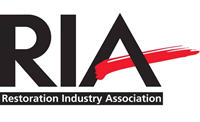RestorationMaster
It is rare that home and business owners prepare for natural disasters, but when they do, they are able to save themselves from life’s biggest disasters, not to mention thousands of dollars in repair costs. With proper planning, such as choosing a qualified restoration provider, numerous losses on building structures, employees, and contents can be prevented; it can mitigate the disastrous effects in the event of a catastrophe. Because nobody knows exactly when a natural disaster will strike, taking the prevention measures now will save buildings, homes, and even lives. Ultimately, by following these steps, you can prevent one of life’s most devastating catastrophes.
When it comes to the philosophy of disaster planning, RestorationMaster guarantees that there are two common factors: (1) it is rare that property owners think it would happen to them and (2) those who had taken proper precautions were repaid numerous times. How? Through saving property, businesses, and lives.
When it comes to the overall success of a continuance program, the use of your experience level and recognition is extremely important. Keeping this in mind, you will gain a basic overview of the basic issues that are associated with the planning of business continuity. The information provides contains general information and is based on the assumption that all individuals have a basic knowledge and technical skills when it comes to contingency and continuity planning. While all cases are different, the steps discussed in this guide will be generic.
The goals of a business continuity or contingency Plan
 Limit the extremity of the disruption
Limit the extremity of the disruption- Minimize suspensions of or disruptions to daily business activities
- Enhance the restoration services
- Assuring all customers that their best interests are covered
- Minimize a large loss as much as possible
- Train all staff on emergency operations
- Develop awareness of natural disasters
- Maintain a confident and positive image around the business
- Ensure employee safety at all times throughout an event
- Creative alternative means of business/operation
- Resume business activities within a specific time
Pre-Loss Planning
Executive Support
In order to develop an effective and successful plan, executive support is crucial. Without it, the necessary resources may never be allocated properly in order to accomplish the overall task. It is also important to present this concept to upper management; therefore, sharing the proper objectives, discussing the associated budget, and implementing the overall program will be necessary. Finally, the cost in repairs and restoration of the latter should also be discussed.
The Responsibility of the Planning Committee
Once finalized, the planning committee should review the entire plan before it is implemented. In order for it to be successful, the members must take a holistic approach as the input from all departments should be shared. This way, all communication, concerns, and visions from the plan’s infancy to implementation are properly addressed.
Committee Chairperson. Different companies and organizations use different titles, such as Risk Manager, Business Continuity Planner (BCP), etc.; however, this individual is in charge of the risk management and synchronization of the entire recovery process. In larger companies, the individual that coordinates the insurance coverage must have the authority to make decisions for emergency situations and assemble the necessary services.
Executive in Charge. This individual is held responsible for the enterprise as a whole and is also in charge of executing any documents required to expedite the restoration and recovery process provided by RestorationMaster.
Adjuster. This individual is responsible for representing the insurance company’s interest. While the claims agent wishes for everything to run as smooth as possible, it is the job of this individual to ensure that the needs of both the customer and insurance company are being met. When developing this plan, it is highly recommended to involve the insurance company to ensure clear and open communication and that all necessary steps are taken.
Agent/Broker. When administrating the insurance policy, the agent must also assist during the claims process. They should also be the source of information between the disaster victim, the insurance company, and other individuals involved. As they have a considerable amount of experience and are a valuable resource when assembling other vendors. These include: RestorationMaster’s temporary equipment, salvage agents, and other disaster restoration services. This person will also answer all questions for the disaster victim and assist during miscommunication and insurance issues.
Property Owner. When decisions made by the building owner are involved, the property owner must also be included in the planning process when a disaster strikes; this is to ensure their authority. Any issues related to the building materials will also require their input.
Department Leaders/Delegates. Representatives from the following departments, including: integrated systems, communications, operations, support, records management, accounting, personnel, warehouse and distribution must be active and submit all information required to complete a Risk Analysis. In order to determine the potential impact associated with any natural disaster, they must review their position in the event that it occurs.
Purchasing. It may be necessary to outsource production or services on an interim or long-term basis, in addition to the replacement of raw materials and stock. The process for procurement should proactively seek “disaster recovery” vendor services and allow for such contingencies during normal business activities, rather than at a time of catastrophe.
Read Over the Insurance Policy
 If a disaster were to occur, it must always be after reading an insurance policy and claim. This is to ensure that there are no surprises during the restoration processes. You will want to pay close attention to all values and limits, clauses, exclusions, depreciation, business interruption, and all other fine print. RestorationMaster strongly recommends that this is done with your claims agent so you can have any questions answered during this time.
If a disaster were to occur, it must always be after reading an insurance policy and claim. This is to ensure that there are no surprises during the restoration processes. You will want to pay close attention to all values and limits, clauses, exclusions, depreciation, business interruption, and all other fine print. RestorationMaster strongly recommends that this is done with your claims agent so you can have any questions answered during this time.
Regulating Authorities
After experiencing a natural disaster, such as a fire, flood, or large storm, there is a large possibility that one or more government agencies will be involved as a part of the emergency response. Your role in this step is to incorporate their participation within the recovery process of your business.
If a fire were to happen, you will want to help out the fire department as much as you can. This includes having an effective and established evacuation plan and all employees know the proper escape routes. The facility should contain a number of placards to notify the emergency responders in advance of all potential risks and hazards that can occur from the inside. You can review this plan with a representative of your local fire department to ensure that it is detailed but still clear, also helping them understand your priorities during catastrophic times.
If the disaster were to happen within a specific area, local law enforcement will most likely be involved in order to bring protection and order to the affected region. Counties, states, and municipalities may also have a part in the recovery process. As this will drastically vary in each region, it is crucial for the committee chairperson, or their representative, to know and understand the policy in their respective region. Without proper credentials or identification, gaining access to your facility can be delayed or even denied. To ensure this does not happen, your recovery process is dependent upon your relationship with these agencies.
When dealing with a municipality or city, it is important to know if it is the police department, Mayor’s office, the fire marshal, or other emergency agency that is the first contact. If the damage covers a variety of cities or towns, it will be automatically defaulted to county agencies. When this happens, you should know whether it is the sheriff’s department or other defense organizations. Even as the disaster expands to the state level, the governor, the Department of Public Service, and even the National Guard may be involved.
It is probably that the federal government agencies, such as the Federal Emergency Management Agency (FEMA) that will be the first contact for severely affected regions. When there is either arson or explosives involved, the Federal Bureau of Investigation (FBI) and its special arm the Bureau of Alcohol, Tobacco and Firearms (ATF) will be involved.
During these issues, RestorationMaster wants you to know that when an emergency situation occurs, many of the factors involved may be beyond your control. When determining the probable participants during each emergency situation, it can save a lot of time and issues involved during the recovery process.
Capital Asset Inventory
When you are properly prepared, you have access to a detailed list containing each piece of equipment and machinery. When you don’t, it is much harder to create the inventory after suffering a large loss. When creating this list, each item should be identified according to the following: age, original cost including freight, types, manufacturer, installation, modifications, and peripherals. RestorationMaster does not recommend to outsource the creation of this list and appraisal; it can be accomplished using internal resources. However, this list does not include the general expenses in contrast to capital items of whose book value has been amortized and is no longer on the ledger. As these values still hold value to the organization, they must be included on the list. Finally, it should be updated periodically and recorded through photographic or videotape records. These should be copied and at least one duplicate should be stored in a fire-resistant facility away from the property.
Vital Records
It is crucial to copy and store all important records and documents off-site and to “back up” computer files at least twice per month. However, many business owners only keep their records on-site and their computer files may go for months at a time without a proper backup.
As a result of being recreated without an inventory, ledger, or appraisal, problems can and will occur. However, record managers are some of the best trained and proactive individuals when it comes to establishing a contingency plan. They will see the purpose in taking the proper steps and potential cause-and-effect of catastrophe scenarios.
RestorationMaster estimates that between 5% and 7% of business records are provided in their original form, it is also important to define what is actually most important to the business’ recovery process. These can include customer demand, business needs, and federal mandate. In the majority of situations, a copy of a document is needed; however, others will require the original document. This is because it important to have the condition of the original information as well as the information itself.
Business Impact Analysis
 While working with the accounting department, the Business Impact Analysis (BIA) will determine the actual value of the business when it is out of commission. One of their tasks is to identify a reasonable timeframe for it to resume activities, including a timeline needed to restore the facility or finding another temporary location. A BIA must also consider the interdisciplinary factors of each department, establishing what is most important based on their value to the entire business.
While working with the accounting department, the Business Impact Analysis (BIA) will determine the actual value of the business when it is out of commission. One of their tasks is to identify a reasonable timeframe for it to resume activities, including a timeline needed to restore the facility or finding another temporary location. A BIA must also consider the interdisciplinary factors of each department, establishing what is most important based on their value to the entire business.
Hazard Analysis
All members of the planning committee are in charge of gathering all necessary information to prepare an insurance claim. It is assumed that they will represent all departments; however, they do not know the department’s responsibilities nor are they familiar with the sense of urgency that must be taken. But once they have been identified, it is crucial to provide them with the proper training on the problems related to their assigned tasks.
The first example of a task can include Hazard Analysis or Risk Analysis. All members of the team must plan for the scenarios in which a large loss is taking place. A Hazard Analysis should include a number of situations of possible disasters, if they are technical, natural, or human threats. The organization’s functional area should always be analyzed to properly determine the possible impact that is associated in each case of disaster as well as the “domino effect.” The following examples should be considered: Operations Impacts, such as Customer Service, Reduced Quality, and Loss of Competitive Advantage; Financial Impacts and Exposures; Intangible Impacts, including Employee Morale, Employee Confidence, and Public Opinion; Critical Business Function; Loss of Customers; and Requirements for Business Continuation.
When factoring domiciled region, building construction, site location, type of operation, stored material, and other similar contributors, certain problems are more likely to happen than others. Although it is not possible to predict every prospective loss, RestorationMaster highly recommends to plan for what-if situations.



